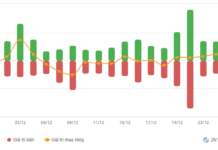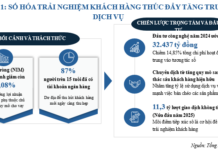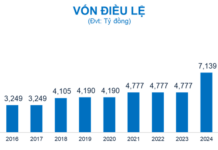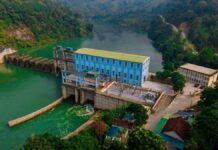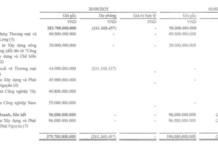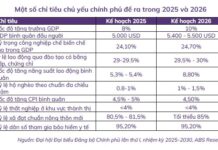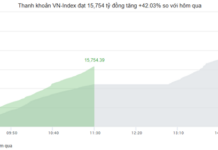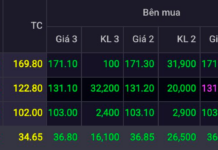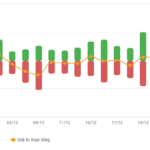Carbon Credits Have an Expiration Date
At the seminar “Carbon Credit Market – Driving Force for Building a Green Vietnam” organized by Tuoi Tre Newspaper on April 20, Mr. Nguyen Van Minh – Head of Economy and Climate Change Analysis Department, Department of Climate Change said that in order to achieve Net Zero by 2050, Vietnam needs commitments in phases because this is a requirement under international agreements.
The market is currently in the 2021-2030 phase, and carbon credits issued during this phase may not necessarily be used after 2030 because carbon credits have an expiration date and cannot be purchased and stored now for use later.
Previously, during the implementation of the Kyoto Protocol from 2008-2012, developed countries were allowed to invest in projects that generated carbon credits to offset their greenhouse gas emission reduction targets. At that time, a significant number of carbon credits were created, and their value was high.
However, after this phase, some developed countries that were obligated to reduce emissions did not fulfill their obligations or comply with their commitments. Consequently, there was a gap in global greenhouse gas emission reduction targets from 2013 to 2020.
“Many countries did not participate in the commitments because they argued that it was unfair for them to act alone while others did not. The price of carbon credits plummeted as a result, from $30 per credit in 2008-2012 to around a few USD,” the expert said.
There was a case of a Vietnamese enterprise that developed a carbon credit project in 2008 but stored the credits to sell at a higher price. However, prices were too low, so they decided not to sell and are currently holding the credits in the United Nations carbon credit registry because it would cost more to retrieve them than to sell them. These credits have since expired, as they are now in a different commitment period.
What Factors Determine the Price of Carbon Credits?
Regarding the current debate in the media, there are two opposing opinions: one suggests that carbon credits should be generated now to create a source of income, while the other argues for policies to prevent the leakage of these credits to international markets so that they can be stored and used to offset emissions in the future. Mr. Nguyen Vo Truong An – Deputy General Director of ASEAN Carbon Exchange Joint Stock Company, said that these two views are not entirely accurate but rather depend on the strategies of individual enterprises, regions, and countries to achieve the Net Zero commitment.
According to the expert, China currently has a policy prohibiting the sale of carbon credits abroad, allowing only domestic trading and storage for long-term strategic purposes.
However, the reality shows that selling carbon credits at a reasonable price and using the proceeds to reinvest in emission reduction technologies can be feasible and serve a long-term vision.
Furthermore, Mr. An emphasized that the most critical factor in carbon credits is additionality. A project that plants trees, rehabilitates land, increases the forest cover of natural forests, or applies certain technologies in factories, commercial centers, or any other project to reduce emissions may have limited feasibility without financial support from carbon credits.
Therefore, the price of carbon credits depends on various factors, mainly the nature of the project and the costs incurred in implementing it.
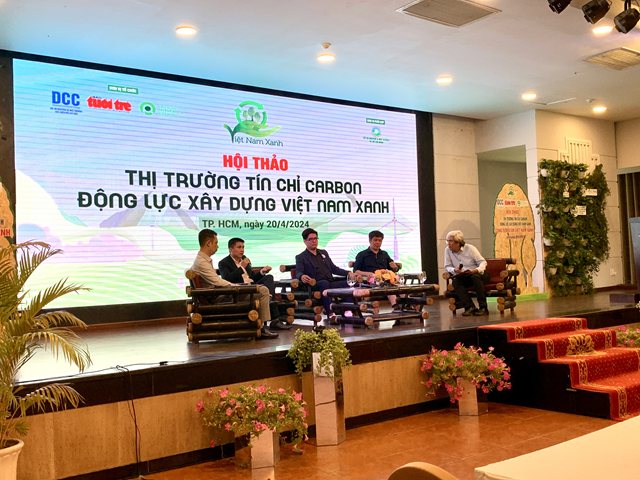
Experts at the seminar. Photo: Tu Kinh
|
Considerations for Establishing a Carbon Credit Fund
Dr. Pham Van Dai – Senior Lecturer, Fulbright School of Public Policy and Management, believes that it is necessary to plan carbon credit utilization to ensure optimal use. According to a study by Bloomberg, by 2050, the voluntary segment could reach $200-$300 per credit, which is 40-50 times higher than the current price. This is based on assumptions about new platforms and technologies that can increase the authenticity of these credits.
In the future, global corporations such as Samsung, Apple, etc., will require their entire supply chains to be carbon neutral. Domestic Vietnamese enterprises that wish to participate in these supply chains must purchase carbon credits, and the prices could be high.
Therefore, consideration should be given to setting up a reserve fund where the government can purchase carbon credits generated by domestic enterprises for future use (20-30 years), allowing enterprises participating in global supply chains to avoid paying exorbitant prices.
According to Mr. Dai, carbon credits should be viewed as a resource, and this resource is specific, finite, and non-renewable. The price of $5 per credit is not high, as it may be related to the quality of this type of carbon credit.
For example, Australia’s inventory found that up to three-quarters of the credits purchased by Australian companies had issues with authenticity. Some forests that were sold carbon credits in Papua New Guinea had been completely cleared for timber, hence the low price.
According to Dr. Nguyen Ngoc Huy – an independent climate change researcher, major international oil companies have been actively seeking out developing countries with forests and technologies to purchase carbon credits in advance, through prepayments or successful purchases, with Shell, for example, purchasing carbon credits from rice plants in China.
Vietnamese enterprises seem unprepared for such markets as early purchases can secure better prices than late purchases. The concern here is the competitiveness of Vietnamese businesses in the international market if they cannot offset carbon on their own.
“Having the money is not enough to offset carbon. We have to change, not just pass the entire responsibility to someone else. Each enterprise needs to innovate its technology and change its approach. This does not require new regulations; it needs to be done soon because we must now chase the market rather than trying to anticipate it,” said Huy.
Small and medium-sized enterprises should join forces through associations
According to Huy, the challenge for small and medium-sized enterprises is the investment required to obtain carbon credits, as the return on investment is not satisfactory. The costs of hiring independent experts for verification are substantial.
“Audit firms like Deloitte and EY have recently started to have independent carbon credit auditors, but their fees are extremely expensive,” said Huy.
Many enterprises find themselves with vast forest areas but face multiple institutional and land ownership issues when it comes to carbon credits. For example, someone buys a hand-written document, but the land it represents is not zoned for forestry, making the generation of a carbon credit highly complex from a policy perspective. Thus, small and medium-sized enterprises face significant challenges in accessing carbon credits.
These enterprises can implement a common formula as an association. For instance, the model of reducing emissions from shrimp farming in Tra Vinh. This model’s approach can be widely replicated, making it easier to conduct audits and apply the model. By adopting a common procedure and association, the costs can be reduced, such as measurement expenses, and access to carbon credits will no longer be limited to small-scale operations.
Mr. Dai believes that carbon credits are a large-scale game because the associated costs of measurement, reporting, and verification are very high. Forest planting must be in the millions of hectares to be economically viable; therefore, it is not a game for small-scale projects. The current market is driven more by buyers than sellers.
Like the North Central project, it is not possible to sell as many credits as are generated, and it resembles a grant more than a real market transaction. To establish a genuine market with real trading, we must wait for new technologies and platforms.
“That’s when companies like Big 4 can participate confidently. If a small enterprise project hires these companies, they may not be willing to participate due to the high risk to their reputation,” said Mr. Dai.
Regarding emission quota allocation, Mr. Minh said that there are two methods for determining emission quotas for enterprises worldwide. The first method is based on an enterprise’s historical emissions. Typically, government agencies will base their allocation on the emissions of the last three years, providing a basis for allocating quotas and may allocate quotas slightly lower than the average emission level. Some countries even allocate quotas higher than the average emissions depending on economic development conditions at the time.
However, using current historical emissions may not be accurate because economic activities were restricted during the COVID-19 pandemic, and allocating quotas based on that period may not align with the enterprise’s growth scenario.
The second method is to allocate emissions based on units produced, requiring the government to have comprehensive information on emissions levels for each sector and industry, allowing them to allocate quotas in a way that ensures the country’s sustainable development.

